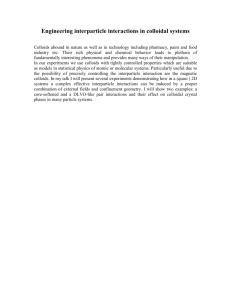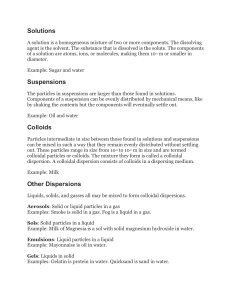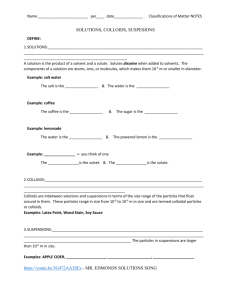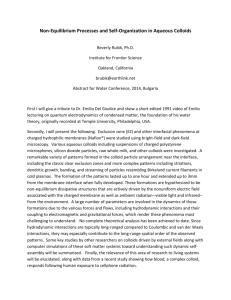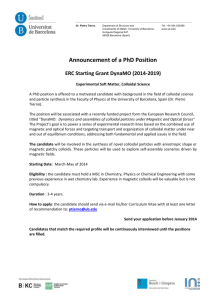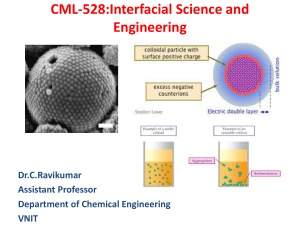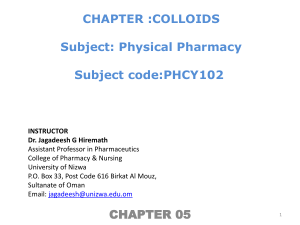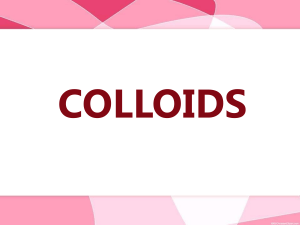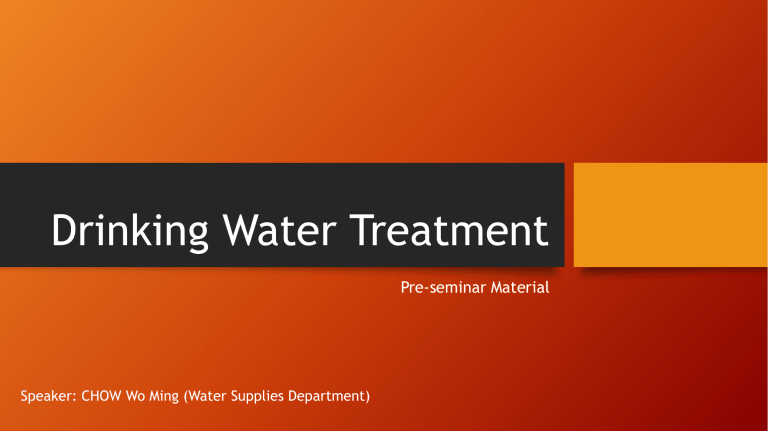
Drinking Water Treatment Pre-seminar Material Speaker: CHOW Wo Ming (Water Supplies Department) Importance of Drinking Water Treatment • Raw water collected from Dongjiang (東江) and rain water requires treatments before public use. • Some substances to be treated: • Colloids (膠體) • Pathogens (病原體) Colloids • A colloid is a heterogeneous mixture in which insoluble particles are uniformly suspended in the dispersion medium (e.g. water). • Examples of colloids in raw water • Organic matter • Clay minerals • Usually colloidal particles are negatively charged. Coagulation (凝聚) • Coagulation refers to the removal of colloids by adding positively charged particles to neutralize the negatively charged colloidal particles. • Alum (KAl(SO4)2 12H2O) is commonly used in coagulation. • Mechanism 1. 2. 3. 4. Dissolving alum in raw water (some Al3+ ions are in water). Al3+ ions bind to the negatively charged colloidal particles. The resulting particles are then sink to the bottom as colloids. Colloids are then removed from raw water. Flocculation (絮凝) • Flocculation is another way to remove colloids in which polymers are used to bind to the colloidal particles, followed by sedimentation. • Unlike coagulation, neutralisation of electrical charges on colloidal particles is not involved in flocculation. Disinfection (消毒) • Disinfection aims to remove pathogenic microorganisms (pathogens) in water. • There are 2 major disinfectants used in water treatment. 1. Chlorine gas (Cl2) • Cl2 (g) + H2O (l) → HOCl (aq) + HCl (aq) • HOCl is very effective in killing pathogens. 2. Ozone (O3) • Ozone kills microorganisms by destroying their cell walls. Content of the Seminar • In this seminar, you will learn about: • Collection of raw water in Hong Kong • Water treatment processes • Water quality monitoring
